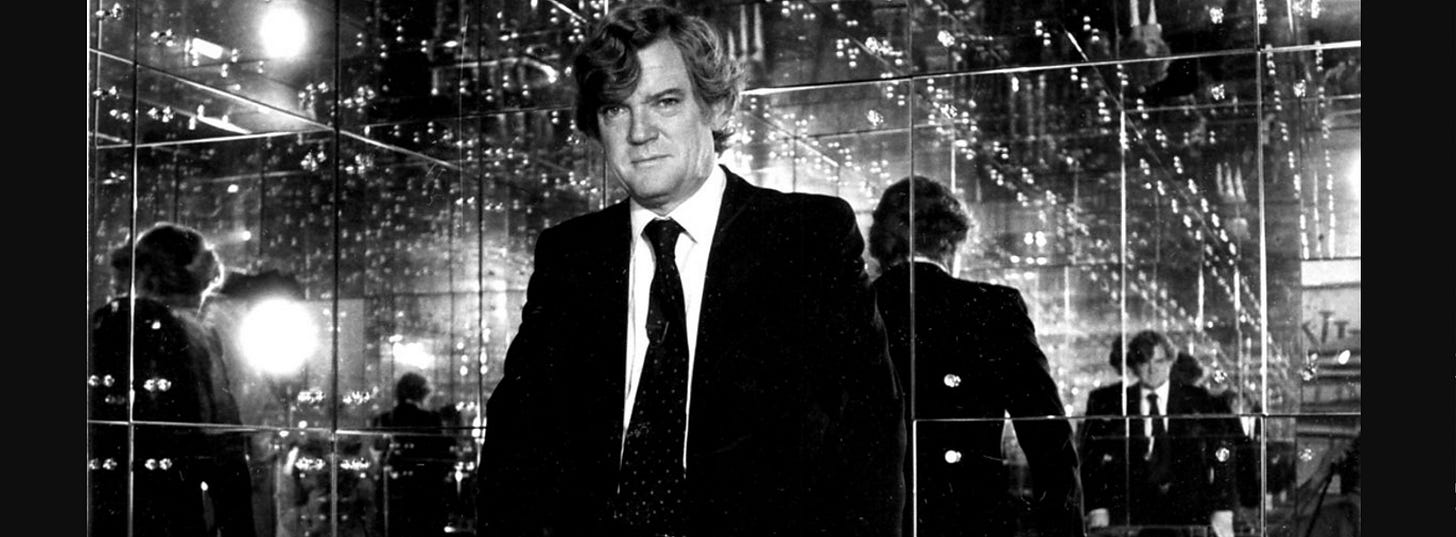VGDC: Bennett Foddy's 'All Time Greats' article/video picks
The QWOP/Getting Over It designer picks some fascinating stuff.
[Hey - it’s the second Video Game Deep Cuts guest post, following Kyle Orland’s ‘All-Time Great’ article/video picks. We’ll be running these from time to time!
In this one, I asked Bennett Foddy, designer of games including QWOP and Getting Over It With Bennett Foddy (pictured) & NYU Game Center professor to contribute some of his favorite game-related writing & videos of all time. With super-interesting results, I reckon.]

‘Mightyvision’ Blog: Imbroglio Notes (Michael Brough, 2016 📰)
Michael Brough has made a long habit of writing detailed design breakdowns of his amazing roguelike games, including 868-HACK, Imbroglio, and Cinco Paus. Every single one is an education, but I would start with his notes on Imbroglio’s design, which I think is when he started to go into much greater detail.
ESL Classics: Rapha vs. Cooller (ESL, match was in 2009, commentary in 2010📽.)
Frank Lantz put me on to this video, a classic e-sports cast where one of the competitors, Rapha, breaks down what’s in his head as he plays a high-level 1v1 deathmatch in Quake 3. The shocking thing about it is the degree of design complexity which is exposed by this kind of play — complexity that could not possibly have been anticipated by the designer who laid out the level in the first place.

Robert Hughes - The Shock of the New: Trouble in Utopia (BBC/Time-Life Films, 1980📽)
This is not about games at all, but an episode from an old documentary series on the rise of modern art and architecture, by the Australian art critic Robert Hughes. This episode is about the rise and fall of high formalism in architecture and urban planning. I show it to my game design students because it mirrors in some ways the current evolution in level design - as we try to contend with designing for the behavior of players who are as expert as Rapha and Cooller, or who are performing for millions of viewers, or who are bored out of their minds in quarantine.
Douglas Wilson - Brutally Unfair Tactics Totally OK Now: On Self-Effacing Games and Unachievements (Game Studies, February 2011📰)
This article, from when Doug Wilson was still a PhD student in Copenhagen and had just released B.U.T.T.O.N, has gotten gradually more relevant for me over time. In 2020 ‘good game design’ has become pretty boring to me just through the abundant supply of it, and even ‘experimental gameplay’, which was once so exciting to me, has become a stale. What’s most interesting to me right now is design that leaves room for culture and can interact with it in rich and interesting ways - an idea that was mapped out very early by Wilson in this prescient article.
Leslie Scott - Thinking Inside The Box (PRACTICE Conference, 2015📽)
This talk from NYU’s PRACTICE conference is one of my favorites. The designer of Jenga tells a story about how that game was designed and brought to market. The thing which sticks with me is how even Jenga, the most apparently-minimalistic of games, required a high level of attention to fine-grained design details to get it working well.

Joseph ‘Zep’ White - PICO-8 and the Search for Cosy Design Spaces (PRACTICE Conference, 2018📽)
I invited this talk so I’m biased, but this is another one of my favorite NYU talks. Zep starts by discussing the detailed how and why of PICO-8, his seminal fantasy console platform, and gradually works his way around to articulating two crucial, deep concepts in creative process, being ‘cuteness’ and ‘cosiness’. It has been an important influence on my own creative practice.
Andrew Braybrook - Birth of a Paradroid series - Part 1, Part 2, Part 3, Part 4 (Zzap! 64 issues 3-6, 1985📰)
This is a developer diary from the development of Andrew Braybrook’s 1985 C64 masterpiece ‘Paradroid’, commissioned by Zzap!64 magazine for a young audience and a young industry, well before anyone got serious about videogame design as an intellectual thing. So it’s primitive by contemporary standards but still fascinating, a window into another time and place and still full of lessons. The biggest one for me: Paradroid’s transfer game, which seems to underpin the entire design, was an extremely late addition.
Commercial Breaks: The Rise and Fall of Imagine Software (BBC, 1984 📽)
Still on the topic of 80s British bedroom developers, this documentary by the BBC’s Paul Anderson starts by capturing the bizarre Fagin-gang economics of late-1980s British game studios, focusing on the Liverpool studio Imagine software. It takes a dark turn, which I will not spoil here, but I recommend watching it and thinking about the contrast with the all-digital contemporary equivalents of this situation.

Ansh Patel: Slave of God (The Arcade Review, Issue 4, 2015.📰)
This is an experimental type of analytic approach which I hadn’t seen before: Ansh Patel explores the meaning in Stephen Lavelle’s oblique 2012 art game ‘Slave of God’ by exploring the code itself and plumbing its secrets. Although the idea of someone analyzing my code is a horrific nightmare to me, Stephen’s code is entirely non-shameful and Patel reveals some unexpected beauty in it too.
Zach always gives a great talk but I love this one for its unusual ratio of how useful it is, how easy to apply it is, and how unobvious it is. It’s focused on a single UI/UX design rule-of-thumb, but actually I have continued to bear it in mind whenever I’m designing how a game works, as well.



